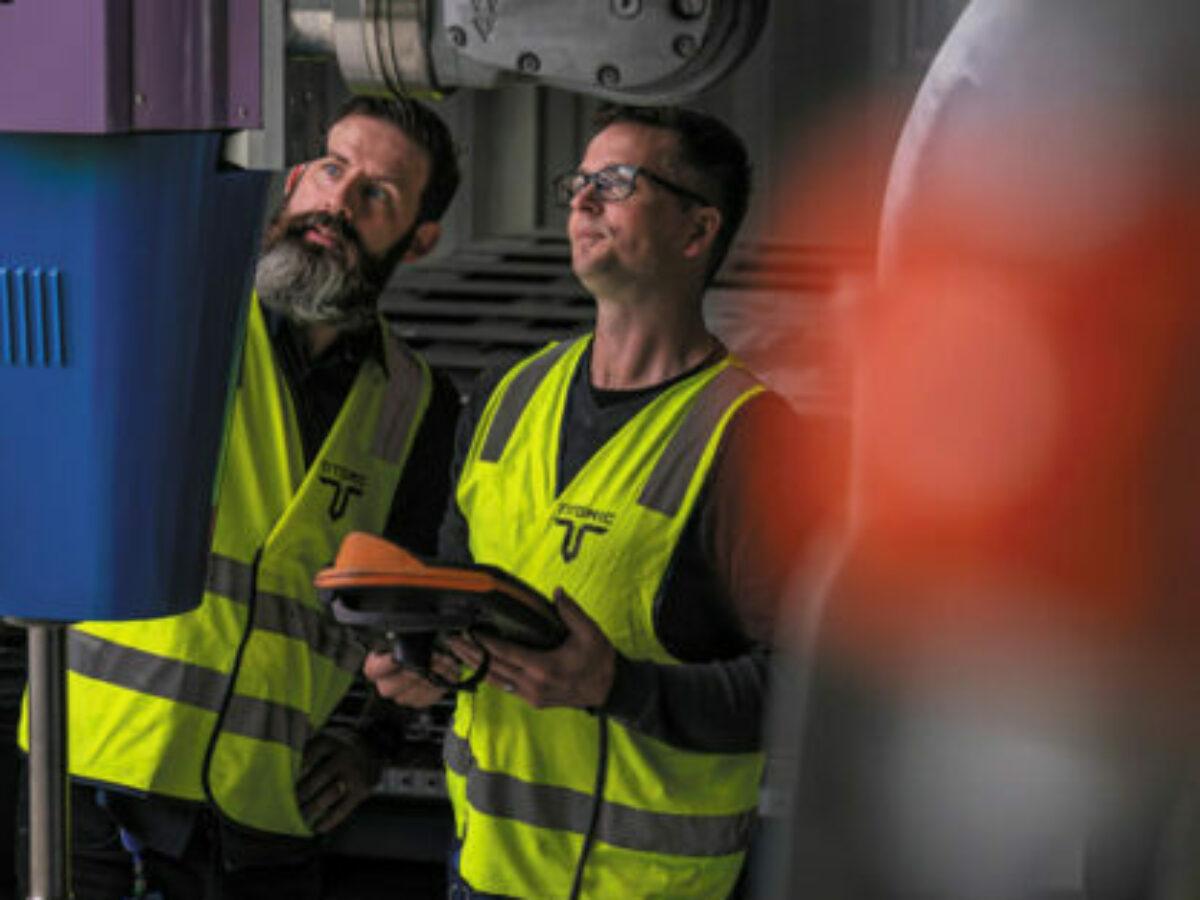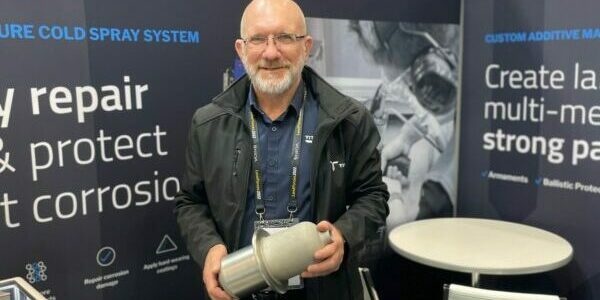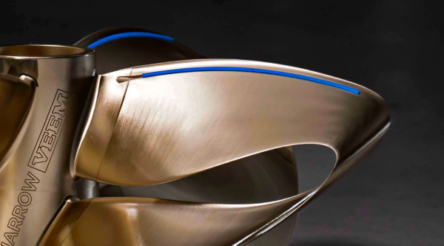Defence partnering for success — mend now, make later

Our sponsored series reporting on BAE Systems Australia’s Partnering for success defence industry supplier event continues with a look at additive manufacturer Titomic’s work in defence. Brent Balinski speaks to the company’s Dominic Parsonson about the potential in lightweighting and supply chain optimisation.
Titomic’s story will be well known to many of this website’s readers, especially those interested in the difficult, important work of commercialising new production technology.
Founded in 2014 with IP from CSIRO based on the cold spray approach to additive manufacturing, they listed on the ASX in 2017 and have been in the thick of applications development with many big-name companies – as well as growing their global presence – since.
A quick look for some of their early work in defence turned up an article from 2017 on a Best Maritime Innovation Award at the Pacific International Maritime Exposition.
They are still looking to break into the military market in a meaningful way, but have progressed significantly, according to Dominic Parsonson, Titomic’s Head of Sales.
“I think some of the awards back then were based on the promise of what the technology could bring, rather than what we’d specifically been making,” he tells @AuManufacturing.
“If you look at it from 2017, I’d say all the way up to about 2020, it was us saying, ‘Okay, how do we convert that promise into a physical good?’”
From plunging headfirst into R&D on unfamiliar products – such as armour – to understand where their technology could answer a need, nowadays there are several promising areas that have emerged.
Parsonson credits the late Tony Martin, BAE Systems Australia’s former Global Access Program Manager, as an enthusiastic supporter of SMEs, including Titomic, with potential answers to internationally-relevant problems.
Parsonson can’t talk in specifics, but shares that the two focus areas with BAE Systems are lightweighting and supply chain optimisation.

Parsonson at the Land Forces expo last October
“We are still waiting for final approvals and there are numerous hoops to jump through,” Parsonson says of a recent weight reduction-oriented project.
“It requires a complete re-engineering from both sides. Because anything that we’re talking about in the defence sector, whether it be land, air or sea – they’ve been doing things a certain way for ten, 15, 20, 50 years.
“And we are arriving, sometimes with a new metal, definitely a new process, and a new type of machine. So the qualification requirements around getting any of our parts onto any defence vehicle, whether it’s land sea or air, are substantial.”
Cold spray both is and isn’t a new manufacturing technology. It uses a “de Laval” nozzle and compressed gas to accelerate metal or ceramic powders to supersonic speeds. These are blasted onto a surface and fuse together, without melting into a liquid state, to form a coating or a part.
Articles often refer to its heritage in the Russian Academy of Science beginning in the late-1970s, and its adoption after that in coatings and repairs, notably on gearboxes for Blackhawk helicopters. Some point out a heritage going back to the early-1900s and the work of US scientist Samuel Thurston.
Its use in AM to make near-net shape parts is more recent, and offers exciting possibilities due to the speed of deposition versus laser-based AM, the potential to blend feedstocks, as well as the ability to work with high-temperature metals that don’t melt well.
There is also the promise of addressing material wastage attached to machining, for example in its “buy-to-fly” ratio for aerospace parts.
There’s also the challenge of cold spray AM’s newness, which Titomic is working on.
Parsonson compares it to a tried and true method of CNC machining from a billet.
“If you find a new vendor, if he’s using a known material and a known process, all you need to do is you qualify the new vendor,” he explains, adding that even “normal metal additive manufacturing” – such as laser powder bed fusion – has a growing collection of data and approvals and processes around it.
“Whereas what we’re doing has never been done before. Even our – in inverted commas – competitors at SPEE3D; we are both breaking new ground every single day and we are having to define processes from scratch, which means it takes us a little bit longer.”
Coating and repairs remain important to paying the bills and providing opportunities. Titomic’s investor material points out that corrosion is a problem worth an estimated $2.5 trillion annually.
“But we see exponential potential for growth in the AM side,” says Parsonson.
“It’s just a longer, harder journey.”
Further reading
TITOMIC RECEIVES SECOND TKF 3D PRINT ORDER IN A WEEK
LAND FORCES 2022 — COLD SPRAY AM CONTINUES TO PROGRESS ALONGSIDE DEFENCE
TITOMIC ADVANCES IN DEFENCE ADDITIVE MANUFACTURING
TITOMIC SUCCESSFULLY RAISES $5.1 MILLION
@AuManufacturing’s series Defence industry partnering for success is sponsored by defence sector prime contractor BAE Systems Australia.
![]()
@aumanufacturing Sections
Analysis and Commentary Awards Defence Manufacturing News Podcast Technology Videos










